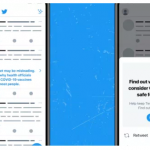How to Get Started Using Linux – If you want to use Linux and don’t know where to begin? Study how you can use Linux, from selecting distro to installing apps.
If you are new to Linux and don’t know how to get started, it is simpler than you can imagine. Even though you are coming over from the macOS or Windows side, or just Linux-curious, you are sure to gain impactful knowledge from these beginners guide to using Linux
Step 1: Choosing a Linux Distro
You will need to pick a Linux distribution, often abbreviated to “distro.” A distro is a unique operating system built on the Linux kernel. The number of distros out there is large and growing, so which should you choose?
That depends on your hardware and your computing habits. Is your PC older or have a low-end processor? Go with a distro that advertises itself as lightweight or resource-friendly. Are you a multimedia content creator? Look for a heavier, studio-focused distro.

Step 2: Creating a Bootable Drive
you need to download the ISO file from the distro’s website. The ISO contains the distro’s basic files and architecture, and you’ll need to write it to a USB drive or SD card so you can boot the Linux “image” on your device.
Don’t be intimidated if this sounds complicated. Many image writing apps exist that will do the work for you with a few clicks. This guide explains the process of writing the Ubuntu ISO to a disk, and the process is the same for most popular Linux distros.If you have to, you can also burn an ISO file’s contents to a DVD that will boot and install your distro. It’s an older and less reliable method, however, and not recommended.
Step 3: Testing a Linux Distro
Once you’ve reached a successful live session, feel free to try apps, connect to the internet, and play music and video.
If you have issues in the live boot, like the sound doesn’t work or the screen looks fuzzy, that may be a sign that the distro isn’t for you. Many problems in Linux are fixable, but some require quite a bit of work, and that’s not a good way to start your Linux experience.
Step 4: Installing Linux
It will usually involve reformatting your hard disk, choosing a region, selecting a keyboard layout, and applying installation and updates.
Important: If you have any files you care about saved on your device, be sure to back them up before attempting a Linux install. A full overwrite will obviously delete any existing data, and while a dual boot situation is possible, the risk of accidental data deletion still exists.
Step 5: Connecting to the internet on Linux
Connecting to the internet in Linux is similar to other operating systems. A network manager tool will typically appear somewhere in your task bar, and launching it will usually bring up a list of available Wi-Fi networks
If Wi-Fi doesn’t seem to work, you may need to download some extra drivers for your wireless network card. Use an Ethernet cable to connect instead, or use a different device, and try searching the internet for a solution for your specific device.
Step 6: Launching Apps on Linux
How do you run an app in Linux? Your distro will often find an app-launching widget similar to a classic Windows start menu or Launchpad on macOS.
Rather than using one of those graphical user interface (GUI) tools, however, you can also easily launch apps with the command line interface (CLI) method, also known as using the terminal.
Step 7: Downloading software on Linux
A basic install of most distros will include at least your basic PC utilities and accessories, such as the firewall, network manager, notepad, and an internet browser. But what if you want extra apps, or a specific app you’re used to using on other platforms?
Many distros include a software-browsing app that will give you a similar experience to the Apple App Store, or the Microsoft Store. Look for something with a name like Software Manager, or AppCenter, where you can find and install many familiar apps, like Firefox, Spotify, and Steam.
Step 8: Customizing Your Linux Experience
This is where Linux really shines: Windows and macOS tend to limit your customizing powers, but almost everything in a Linux desktop can be changed with the right tools and know-how. It’s even possible to make your Linux desktop look like Windows or like macOS.
You should find some options in your distro’s appearance settings menu, but you can customize further by looking up guides for your DE specifically







